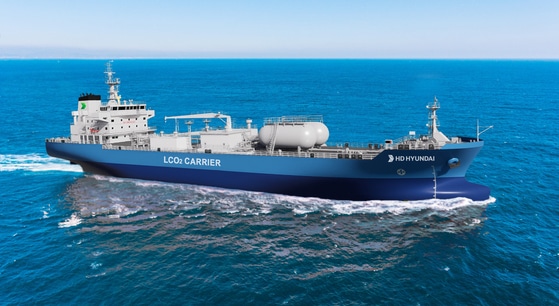Korea Leverages Shipbuilding in U.S. Trade Talks

Korea is strategically positioning its shipbuilding industry as a pivotal asset in ongoing tariff negotiations with the United States. Industry experts emphasize that Korea’s technological advancements can provide significant value beyond mere capital investments. This move comes on the heels of Japan’s recent commitment of over $550 billion in U.S. investments, setting a benchmark for Korea’s expectations in these discussions.
Strengthening Ties with U.S. Shipyards
Since the re-election of U.S. President Donald Trump in January, Korean shipbuilders have intensified their collaborations with American shipyards. A notable development is HD Hyundai’s recent agreement with Edison Chouest Offshore (ECO) to co-develop medium-sized liquefied natural gas (LNG) dual-fuel container ships in the United States. An ECO delegation visited HD Hyundai’s facilities in Korea to discuss further cooperation plans.
Additionally, HD Hyundai signed a memorandum of understanding in April with Huntington Ingalls Industries, the largest defense shipbuilder in the U.S. This partnership aims to enhance production efficiency and share advanced shipbuilding techniques, positioning HD Hyundai for future involvement in U.S. Navy vessel production.
Meanwhile, Hanwha Ocean has taken steps to bolster its shipbuilding capabilities in the U.S. by placing an order for an LNG carrier through its shipping affiliate. This order, valued at 348 billion won ($254 million), marks a significant milestone as it is the first time a U.S. shipyard has received an order for an LNG carrier in 46 years. The construction will occur at Hanwha Ocean’s Okpo shipyard in South Korea due to a lack of skilled labor and technical capacity at the U.S. site. Hanwha Philly Shipyard will oversee the administrative aspects of the project.
Challenges Ahead for Compliance and Production
Despite these advancements, challenges loom regarding the legal classification of the vessels as U.S.-built. Current regulations stipulate that a ship must contain no more than 25 percent foreign components by value and must have its structure completed in the United States to qualify for “U.S.-built” status. If the U.S. government enforces these rules strictly, Korean firms like Hanwha may face pressure to invest significantly in U.S. facilities and labor to ensure compliance.
An executive from a Korean shipbuilder, who requested anonymity, indicated that the shipbuilding industry might be compelled to pledge substantial investments, similar to Hyundai Motor Group’s commitment of 31 trillion won in the U.S. Yang Jong-seo, a researcher at the Overseas Economic Research Institute, cautioned that even with investments, achieving productivity in the U.S. could be challenging due to a shortage of skilled labor. He urged the government to address these issues during negotiations.
Should both countries agree on a co-construction model, Korean firms could lower costs while maintaining essential production roles. This framework would not only help revitalize U.S. shipbuilding but also enable Korea to capitalize on the growing demand for LNG carriers. Starting in 2029, U.S. federal law will mandate that domestically produced LNG be exported on U.S.-flagged vessels, further increasing demand.
Chae Woo-seok, executive director of the Korea Defense Industry Association, noted the bipartisan recognition of shipbuilding as crucial to national security in the U.S. With the shipbuilding industry as a bargaining chip, the Korean government is poised to negotiate from a position of strength.
